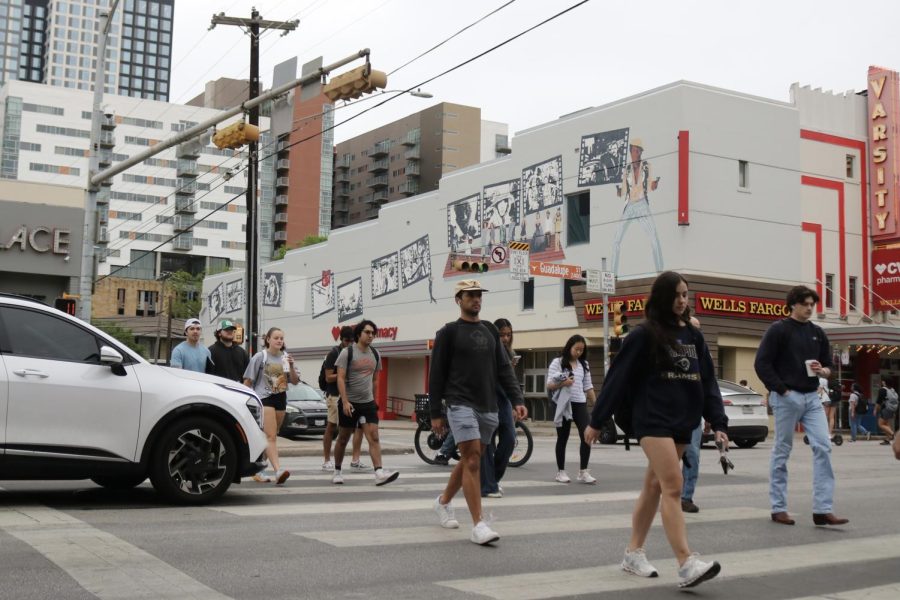‘I almost bump into them all the time’: Pedestrians, cyclists feel unsafe sharing roads
April 17, 2023
The design of roads surrounding campus poses a threat to pedestrian and cyclist safety, according to urban studies professor Greg Anderson. This creates a domino effect as their struggles for safety threaten how others travel.
According to Anderson, the urban mobility transit plan Project Connect found that the 24th Street and Guadalupe Street intersection may see more pedestrian traffic than any other intersection in Texas — yet 85% of it still caters to automobiles. Anderson said there is a lack of attention given to cyclists that sets them apart from both cars and pedestrians, leaving them without a clear path to follow. These unclear rules can make pedestrians feel unsafe while navigating the intersection, he said.
“(Downtown Austin) is the biggest employment center of central Texas, next to the densest neighborhood, West Campus, and lots of people (find their way) on two wheels since most of them don’t have cars,” Anderson said.
According to the city Of Austin, about 2,000 vehicles and 7,500 pedestrians travel and cross Guadalupe Street during the afternoon rush hour. Anderson suggested decreasing the driving lanes from four lanes to two lanes, dedicating the extra space to protected bike lanes and larger sidewalks.
“A protected bike lane is much more substantial than just a lousy strip of paint or, even worse, a shared road,” Anderson said. “There’s nothing worse than saying, ‘This lane is now a shared lane with the 5,000 pound Suburban.’”
Felicity Hung, a marketing and Plan II senior and member of Texas 4000, an organization that runs the world’s longest charity bike ride, said committing more lanes to cyclists would make her feel safer as biking on a small shoulder or sidewalk forces her to merge with traffic.
“That’s definitely scary,” Hung said. “Sometimes (cars) honk at you, and if they’re really mad, they’ll roll down their window and yell at you.”
Hung said even with a bike lane, she is often derailed onto the sidewalk because of litter and debris.
Undeclared freshman Amy Salmeron said sharing the sidewalk with two-wheeled traffic makes her feel unsafe as a pedestrian.
“(Two-wheeled vehicles) don’t feel safe either, so they just ride the scooter where the pedestrians are,” Salmeron said. “They never verbally say where they’re going. I almost bump into them all the time.”
Salmeron also said small sidewalks or debris deter her onto the road.
“The route I would usually take, which is just a 10 minute walk to campus, has literally no sidewalks,” said Salmeron, who also crosses Guadalupe Street on her route to and from class. “I felt so uncomfortable, especially as a freshman.”
Increasing pedestrian and cyclists’ safety increases the city’s walkability, boosting people’s mental health, physical health and the city as a whole, Anderson said.
“It’s eyes on the streets,” Anderson said. “It’s all your neighbors out enjoying your city outside of their automobile that makes the city safe. When we promote that via active streetscape and right-sized roads that promote biking and walking, that’s how you really get a city that gels.”



